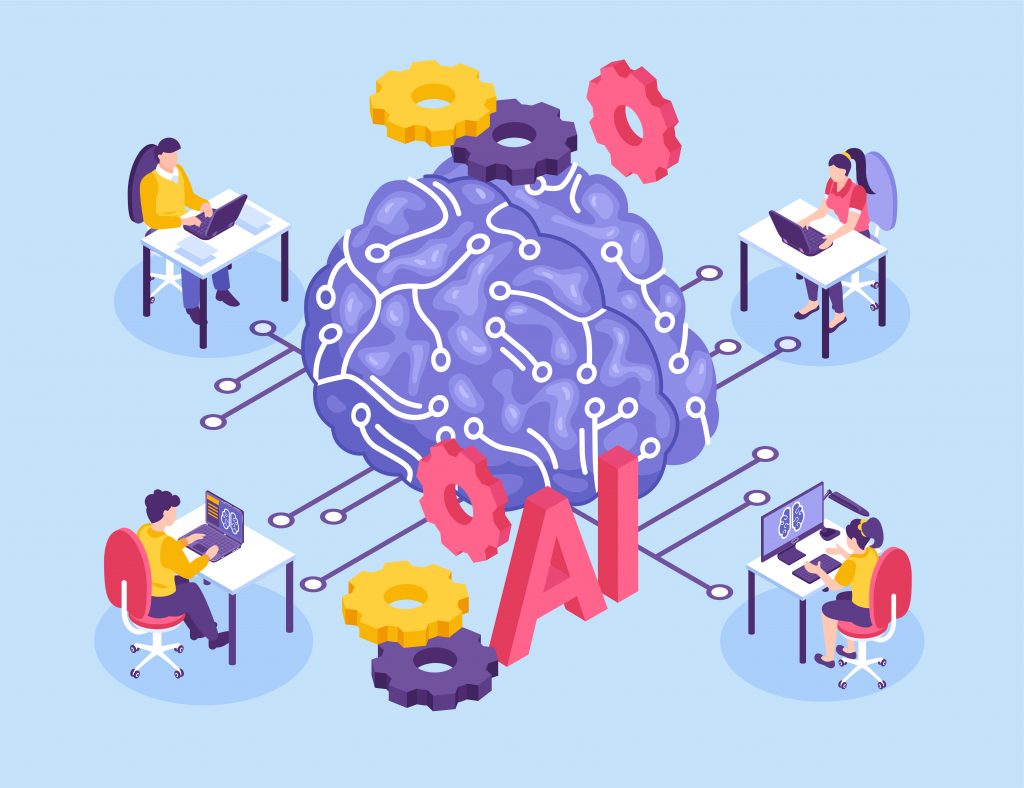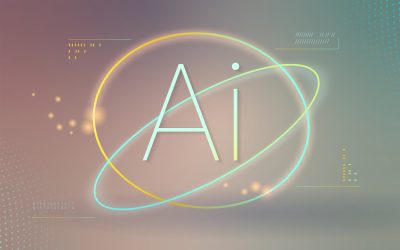Artificial intelligence (AI) is emerging as a major catalyst for revolutionary innovation and progress. What was once the stuff of speculative fiction and futuristic movies has now materialized into a tangible presence. It is actively influencing the trajectory of our future. In fields such as healthcare, finance, and marketing, AI possesses the capacity to revolutionize our lifestyles and professional endeavors. This article strives to offer a comprehensive understanding of how to create artificial intelligence and its essential principles. Providing practical advice for those seeking to develop their own AI capabilities. A skill set that has become increasingly indispensable in today’s expanding technological field.
Understanding the fundamentals of AI
Artificial intelligence can be broadly classified as weak AI. Designed to perform specific tasks. Strong AI, with cognitive capabilities close to human understanding and awareness. Most current AI applications, such as voice assistants and recommendation systems, belong to the weak AI domain.
The fundamental technologies of artificial intelligence include machine learning where machines acquire knowledge from data and natural language processing. Enabling machines to understand and interact with human language. Deep learning, a subset of machine learning, is particularly revolutionary. It uses neural networks to examine complex data.
Determining the Need for AI and the Importance of Quality Data
Determining the appropriate application for artificial intelligence (AI) is a fundamental aspect of developing impactful and meaningful AI systems. This process begins with a comprehensive business review. Also, of the obstacles encountered by organizations or individuals. In doing so, we can identify areas characterized by repetitive, laborious, or excessively complex tasks. They exceed human capabilities. These areas are the main candidates for AI implementation. For example, AI can be used to automate customer support via chatbots. Also, improve operational efficiency in manufacturing by optimizing production lines. Or extract valuable insights from large amounts of data for marketing purposes.
Having recognized the need, it’s imperative to recognize the importance of high-quality data. Artificial intelligence, particularly machine learning, relies heavily on data. This is to acquire knowledge and generate accurate predictions or suggestions. Data must possess certain qualities, such as being representative, exhaustive, accurate, and up-to-date. For example, in a product recommendation system, it is crucial to have detailed data on user preferences, previous purchases, and interactions with products. Inadequate data quality can lead to biased or inefficient AI models. It is ultimately leading to faulty business decisions or an unsatisfactory user experience. Consequently, meticulous attention must be paid to data collection and refinement. Also, the organization of data guarantees the triumph of any AI enterprise.
Programming Languages and Tools for Artificial Intelligence
To know how to create artificial intelligence, you need to know these languages:

Programming languages: Python and R
Python is widely regarded as the preferred language for artificial intelligence and machine learning. It has clear syntax and a wide range of specialized libraries, such as NumPy for scientific computing and Pandas for data manipulation. They make it exceptionally well suited to AI applications. Python is also widely used with frameworks such as TensorFlow and Keras. These are specially designed for deep learning, facilitating the creation and execution of complex AI models.
R, on the other hand, is a formidable programming language. It is widely acclaimed in the field of statistics and data analysis. It may not enjoy the same level of popularity as Python in the field of AI as a whole. R shines in its ability to perform complex statistical analysis and facilitate comprehensive data visualization. Two indispensable facets of machine learning.
To know how to create artificial intelligence, you need to know these frameworks:
Platforms and Frameworks: TensorFlow, PyTorch, Keras
TensorFlow, an open-source framework for numerical computation, was developed by Google. It has gained popularity in the field of deep learning. Its extensive capabilities and scalability make it a top choice for both enterprises and academics.
PyTorch, a Facebook innovation, is renowned for its inherent simplicity. As such, its a user-friendly nature and remarkable adaptability, particularly in the field of deep learning model experimentation. The dynamic architecture it uses is highly appreciated in the context of research efforts and prototype development.
Keras is a sophisticated application programming interface (API) for building neural networks. It is frequently used as a channel for TensorFlow. Keras is distinguished by its intuitive nature and transparent experimentation facility. This facilitates the rapid and effortless creation of artificial intelligence models.
Importance of Integrated Development Environments (IDEs) and Collaboration Tools
IDEs are of paramount importance in AI programming. Important examples such as PyCharm for Python or RStudio for R provide a complete coding ecosystem, integrating debugging capabilities, project management tools, and seamless version integration. By improving efficiency and guaranteeing code integrity, they contribute substantially to productivity and the production of exemplary code.
In addition, the use of collaborative platforms such as GitHub and GitLab is of the utmost importance in fostering teamwork between developers, enabling them to exchange, evaluate, and supervise code efficiently. Given the dynamic nature of the AI field, these platforms play a central role in facilitating knowledge exchange and promoting collective innovation, accelerating the creation of resilient and revolutionary AI solutions.
Building an AI Model: Steps, Best Practices and Training Techniques
To understand how to create an artificial intelligence and put it to good use, you need to understand the following steps:

Steps and Best Practices for Building an AI Model
- Define the problem: Start by clearly defining the problem you want to solve. In this step, decide on the approach and type of data you need.
- Collect and prepare data: Collect relevant, high-quality data. Data cleaning and preparation are essential to ensure model accuracy.
- Model selection: select the appropriate AI model for your problem. Models vary depending on the task (classification, regression, clustering, etc.).
- Train the model: train the model using your data. This involves adjusting the model’s parameters so that it can learn from the data.
- Evaluate and adjust: test your model on different data sets to evaluate its performance. Adjust your model according to the results to improve accuracy.
- Deploy: Once the model is satisfactory, it’s time to deploy it in a real environment so that it can start solving the defined problem.
Model training and learning techniques
Supervised learning involves exploiting labeled data to impart the model’s understanding of the correlation between inputs and desired outputs. On the other hand, unsupervised learning involves the model autonomously extracting patterns and structures from unlabeled data in the absence of explicit guidance. Finally, reinforcement learning involves the model acquiring the ability to make informed decisions through the mechanism of receiving rewards for competent actions.
To understand how to create and improve artificial intelligence, you need to know:
Testing, Validating, and Improving AI Models
- Data separation: Divide data into training, test, and validation sets to evaluate model performance.
- Cross-validation: Use cross-validation to test the robustness of a model on different subsets of data.
- Hyperparameter tuning: Optimize model hyperparameters to improve model performance.
- Performance evaluation: Use appropriate metrics (precision, accuracy, recall, etc.) to evaluate model performance.
- Iterate and improve: review and adjust your model based on test results to continually improve its performance.
By adhering to these procedures and methodologies, we can develop a robust and effective AI framework, capable of solving complex problems and generating substantial value in a variety of fields.
Strategies for AI Model Deployment and Integration
Deploying AI Models in Different Environments
The decision between cloud and on-premise deployment is based on a variety of considerations, including data sensitivity, resource availability, and performance requirements. Deployment in the cloud offers the advantages of elasticity and scalability, while on-premise solutions offer complete control and enhanced security measures.
The use of containers and orchestrators such as Docker and Kubernetes can enhance the deployment and administration of AI models, ensuring their adaptability and operational efficiency.

Integrating AI into existing applications and systems
APIs and microservices offer a streamlined approach to seamlessly integrating AI models into pre-existing applications and systems. Microservices, in particular, offer a versatile and adaptable way of enhancing applications with AI functionality.
Performance and scalability management
Implement monitoring systems to track model performance in real-time and perform regular maintenance. Prepare AI models for scalability by using cloud solutions or modular architectures to handle increasing data or query volumes.
Ethical considerations and best practices
Ethical implications of AI creation
It is imperative to remain alert to potential biases in data and algorithms. Proactively engage in the process of detecting and resolving these biases to ensure fairness in the development of AI models.
Tips for Fair and Transparent Use of AI
Promote the importance of maintaining transparency in AI processes and decisions, which implies the need to improve the comprehensibility of models for end users. In addition, prioritize the protection of user confidentiality and privacy. All this is thanks to the implementation of solid data protection mechanisms. Emphasize the importance of ongoing training and the availability of resources to further improve knowledge and skills in this area.
Ongoing training and technology watch
Continuous learning is imperative in the face of the rapid evolution of AI. Keeping abreast of the latest trends, techniques, and best practices is crucial for optimum performance. To stay at the cutting edge of the field, active involvement in AI communities, attendance at conferences, and active participation in training programs are highly recommended.
Resources for learning and staying informed
Online courses and tutorials offered by platforms such as Coursera, edX, Udacity, and Altcode are available for people wishing to improve their knowledge and skills in the field of artificial intelligence. In addition, staying up-to-date with academic literature and expert blogs can provide valuable insights and in-depth analysis. By integrating these strategies, practices, and resources into your approach to AI, you can ensure the effective, ethical, and efficient implementation of artificial intelligence solutions.

Summary
Artificial intelligence represents an exciting technological advance with significant implications for competitiveness in the contemporary economic arena. This article examines the fundamental procedures required for the development and integration of AI models. It provides an understanding of how to create artificial intelligence, encompassing the identification of requirements, and the acquisition of high-quality data. As well as subsequent deployment and integration in various contexts such as cloud-based systems or on-premises installations. We highlight the central role played by programming languages such as Python and R, alongside platforms and frameworks such as TensorFlow, PyTorch, and Keras. In addition, we address relevant concerns regarding performance management and scalability of solutions. As well as ethical considerations and best practices for the responsible use of AI.
At Altcode, we invite you to embark on an exhilarating journey toward learning how to create and assimilate artificial intelligence. Our team is ready to offer you seamless support throughout this transformative process. Providing you with the knowledge, resources, and guidance you need to turn your concepts into triumphant AI solutions. Let’s collectively explore the limitless possibilities of AI, paving the way to prosperity for your business. Seize the opportunity and contact us now. Incorporate artificial intelligence into your business strategy today, and stand out from the crowd in a constantly evolving field.




